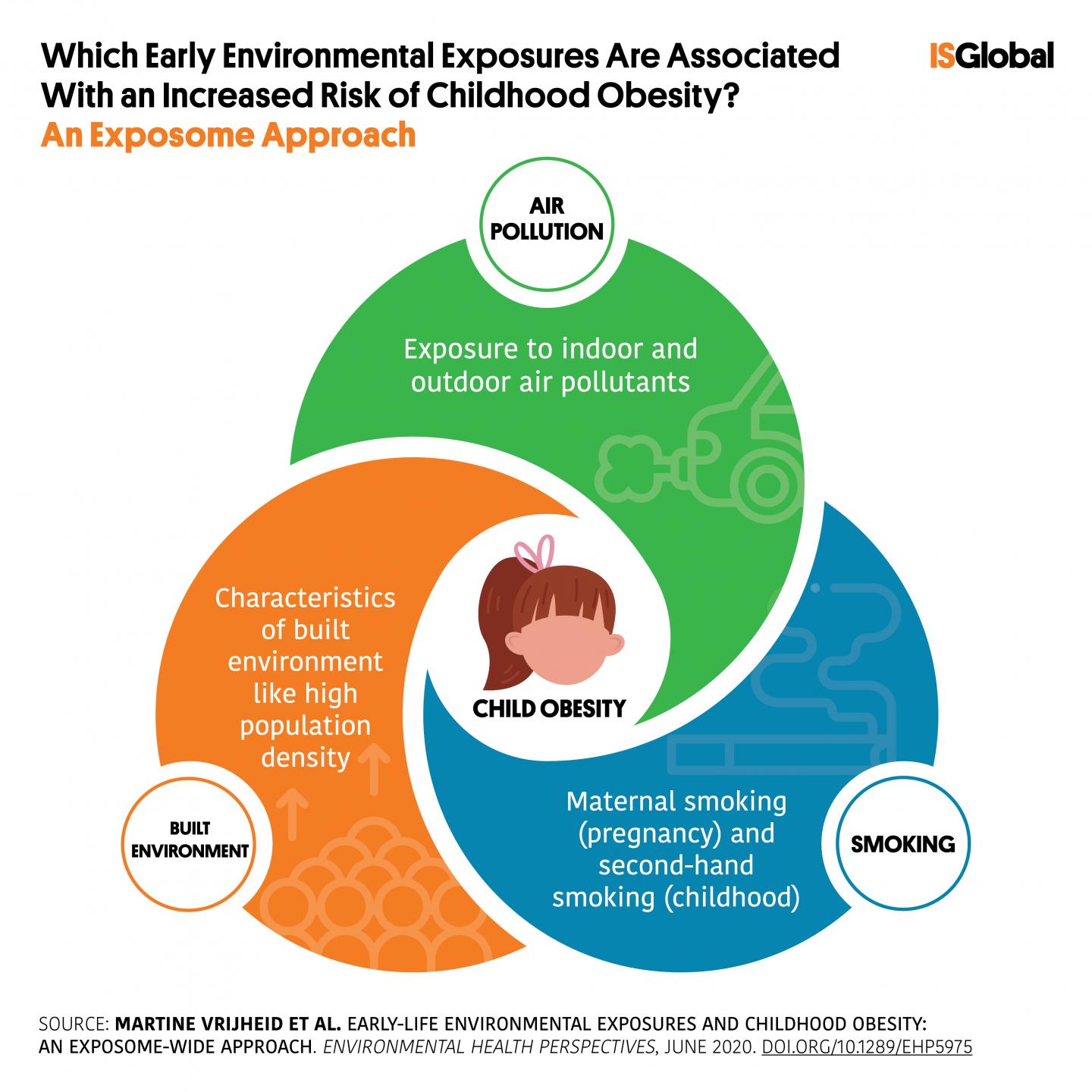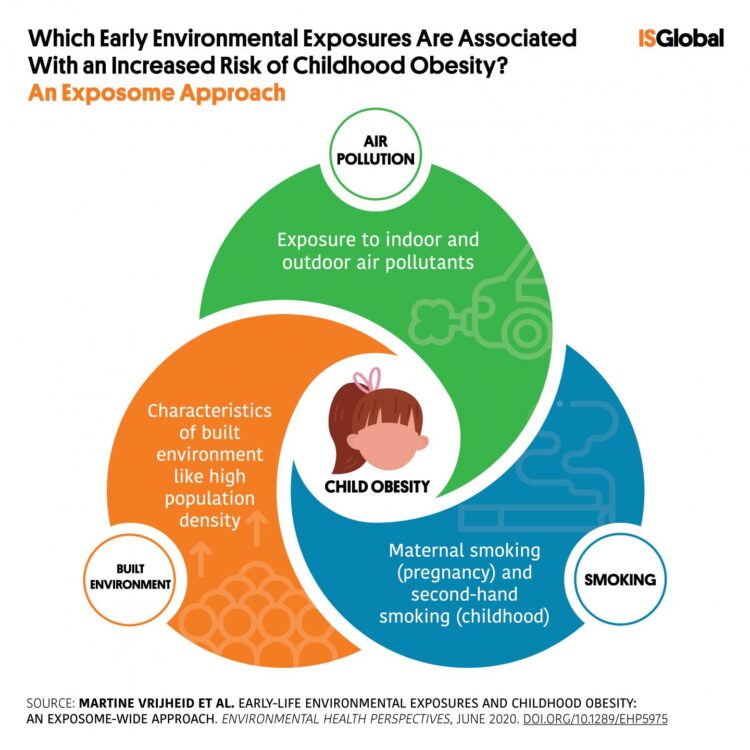173 exposures analysed in first major study to assess risk of obesity in childhood using an exposome-wide approach

Credit: ISGlobal
How do environmental exposures during pregnancy and childhood influence the risk of obesity in children? The Barcelona Institute for Global Health (ISGlobal), a centre supported by the “la Caixa” Foundation, and the University of Southern California led the first major study to investigate the associations between many pollutants and environmental factors –77 prenatal and 96 childhood exposures– and the risk of childhood obesity. The findings show that air pollution, smoking and certain characteristics of the built environment–such as high population density– may play a role in the development of obesity in children.
To date, several studies have addressed the effect of environmental pollutants, lifestyle factors, and urban environment factors on childhood obesity, but they studied each single exposure separately. The exposome concept has changed the way we investigate how environmental risks affect health. Instead of analysing the possible health consequences of, exposome studies consider many different exposures a person faces altogether. This approach takes into account many elements we are exposed to through our diet, lifestyle and the environment where we live.
The new study, which forms a part of the HELIX project and was published in Environmental Health Perspectives, used data on more than 1,300 children aged 6 to 11 years from birth cohort studies in six European countries: France, Greece, Lithuania, Norway, Spain and the United Kingdom.
The authors used data on body mass index (BMI), waist circumference, skinfold thickness and body fat mass to determine the children’s overweight and obesity status. Blood and urine samples from the children and their mothers during pregnancy were also analysed. In total, 77 pregnancy and 96 childhood exposures were assessed, including air pollutants, built environment, green spaces, smoking and chemical pollutants (persistent organic pollutants, heavy metals, phthalates, phenols and pesticides).
ISGlobal researcher Martine Vrijheid, who coordinates the HELIX project and was the first author of the study, commented: “The prevalence of childhood obesity is increasing at alarming rates across the globe and may have increased even more than usual during the COVID-19 lockdown period.” The findings of the study, which used data collected before anti-COVID-19 measures were introduced, were in line with global trends: the combined prevalence of overweight and obesity was 29% for the study population as a whole, with higher percentages for the cohorts from Spain (43%) and Greece (37%).
The results showed that exposure to smoking (both maternal smoking during pregnancy and second-hand smoking during childhood), air pollution (PM2.5 and PM10 particulate matter and nitrogen dioxide, indoor and outdoor) as well as certain characteristics of the built environment were associated with a higher childhood BMI. Differences in socio-economic status did not explain these findings.
Associations with chemical pollutants were less consistent, with some chemicals measured in child blood (heavy metals copper and cesium) showing higher BMI, and others (persistent organic pollutants such as PCBs and DDE pesticides) showing lower BMI. This may be explained by the fact that chemicals were measured at the same time as obesity in the children, and obesity status may have influenced chemical blood levels. Longitudinal follow-up of the cohort is needed to establish this.
Obesity and Unwalkable Cities
“The children who live in densely populated areas and go to schools in areas with few services and facilities were more likely to be obese,” commented Leda Chatzi, Professor of Preventive Medicine at the University of Southern California and last author of the study. The relationship between obesity and the characteristics of the built environment “is in line with the findings of previous research and could be explained by a lack of opportunities for children to walk or engage in other outdoor physical activities,” she adds.
“These findings provide further evidence that modifying environmental exposures early in life can limit the risk of obesity and associated complications,” commented Martine Vrijheid. “The implications for public health are important since these results may help to identify obesity-related exposures that could be targeted for prevention and intervention early in life.”
Funding: The study received funding from the European Community’s Seventh Framework Programme (FP7/2007-2013) under grant agreement no 308333 – the HELIX Project and the National Institute of Environmental Health Sciences NIEHS R21ES029681.
###
Media Contact
Marta Solano Alberca
[email protected]
Original Source
https:/
Related Journal Article
http://dx.





